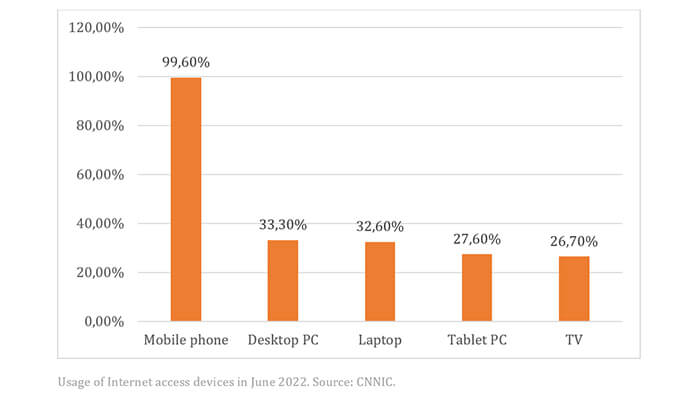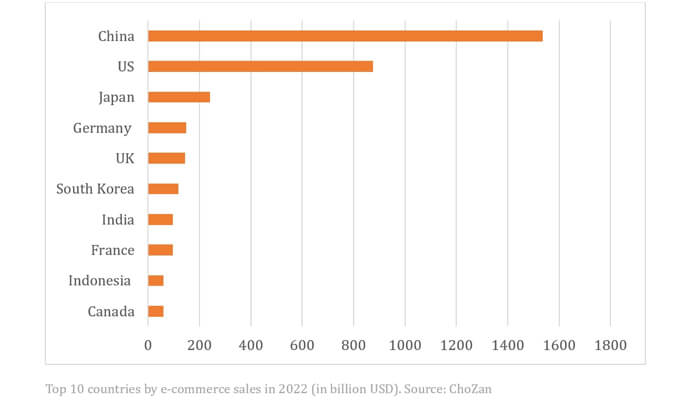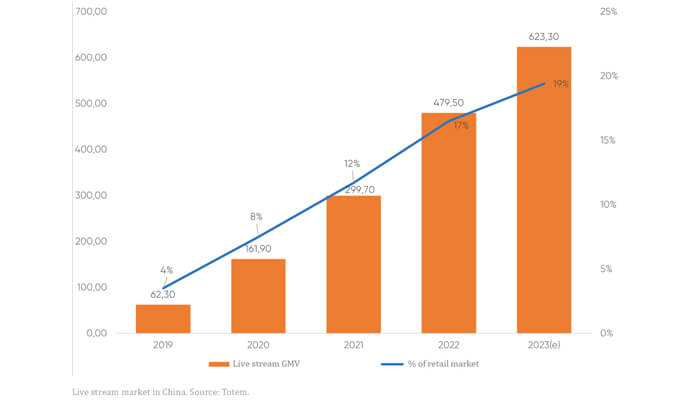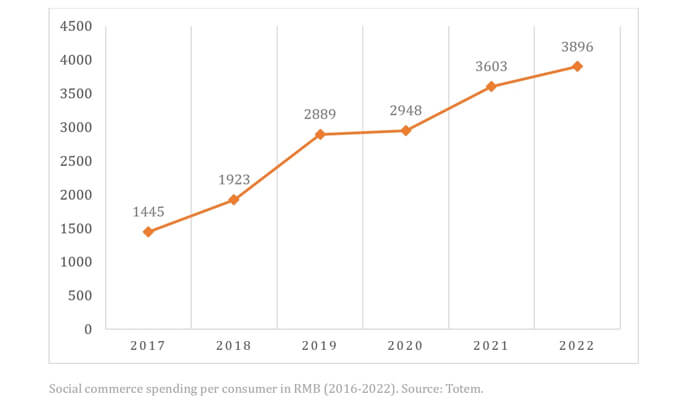China’s new marketing trends are rapidly evolving and shaping global industry trends. This article explores the unique strategies being adopted in China, including live-streaming e-commerce and social e-commerce. By analyzing these trends and their impact on consumer behavior and brand-customer interactions, we provide valuable insights for marketers navigating this new terrain.
Whether you’re a seasoned professional or new to the Chinese market, this exploration offers insightful perspectives on engaging with one of the world’s largest consumer bases. Join us on a compelling journey through China’s new marketing trends that are changing the future of global marketing.
Features of Chinese marketing
As the world turns to the digital sphere, developing an effective marketing campaign in China means reshaping and redefining the boundaries of commerce, presenting us with a fascinating interplay of traditional and innovative strategies. Exploring how China does marketing trends uncovers a sophisticated matrix of consumer engagement and brand communication strategies that consistently adapt to evolving Chinese trends.
In the constantly evolving realm of online marketing in China, there is a clear shift from a singular, brand-centric approach to a more holistic, customer-centric methodology. This new trend in China places significant emphasis on social e-commerce, integrating online shopping with social media platforms to provide a comprehensive and immersive shopping experience.
Leveraging the biggest trend in online marketing, live-streaming has emerged as a powerful tool to create an interactive shopping environment, drastically transforming the face of digital marketing in China.
Chinese trends also show a significant push toward personalization. Artificial intelligence and big data play a critical role in digital marketing in China, enabling companies to curate personalized shopping experiences, predict consumer behavior, and optimize their marketing strategies.
China’s online marketing landscape is dominated by giants like WeChat and Alibaba, whose vast, integrated platforms offer unparalleled opportunities for brand exposure and customer engagement. These platforms have revolutionized the concept of online marketing in China by seamlessly integrating multiple services such as messaging, shopping, payments, and more under one roof.
One of the most striking facets of the new trends in China is the rapid adoption of trendy products in China through live-streaming sales. This has been especially impactful in rural areas, creating a symbiotic relationship between urban brands and rural consumers, and is becoming the biggest trend in online marketing.
In summary, the dynamic and diverse nature of Chinese marketing, coupled with the rapid adoption of digital technologies, represents a new paradigm of consumer interaction. The confluence of traditional and innovative marketing techniques forms the foundation of China’s vibrant marketing ecosystem and sets the standard for the future of global marketing.
Why is China such a highly targeted market?
The Chinese market is highly attractive due to its size, purchasing power, and technological advancements. With China’s population of over one billion people and rapidly developing low-tier cities, businesses have a huge customer base to target. Increasing disposable incomes drives consumer culture and demand.
China’s digital revolution fuels a thriving online economy, including marketing, e-commerce, and fintech. Unique cultural preferences create opportunities for customized products, attracting global businesses seeking growth and diversification. China is a promising market due to its size, wealth, innovation, and cultural distinctiveness.
Chinese Consumers’ Preferences and the Consumer Trends in China in 2023
In 2023, consumer trends in China continued to evolve in line with the country’s technological progress, societal shifts, and changing lifestyles.
New retail concept
A major trend is the “new retail” concept, a seamless integration of online, offline, and logistics experiences that offer personalized and convenient shopping. This hybrid retail model aims to deliver a unified customer experience, regardless of where or how customers shop.
Besides, it is necessary to note an increasing market share of e-commerce platforms in the Chinese retail sector. E-commerce stores such as Tmall and Taobao are convenient for Chinese customers, as Chinese people are actively involved in digitalization. In addition, these platforms incorporate Chinese social media features (for example, Taobao offers the Taobao Live service) and provide digital advertising opportunities.
Green consumption
Another notable trend is the rise of green consumption. Chinese consumers are becoming increasingly aware of sustainability and are looking for eco-friendly products and brands that demonstrate social responsibility. This shift is evident in sectors such as fashion, beauty, and food and beverage, where eco-friendly, cruelty-free, and plant-based products are gaining traction.
Health and Wellness
In addition, the trend towards health and wellness has increased significantly. Faced with the impact of the global health crisis, Chinese consumers have stepped up their commitment to well-being, demonstrating heightened interest in physical fitness, organic food choices, and mental health services. More than ever before, their heightened awareness of overall wellness has become a powerful driver of their consumption habits.
Live-streamed e-commerce
Finally, the continued rise of live-stream e-commerce cannot be overlooked. This interactive shopping experience, driven by influencers and key opinion leaders, allows for real-time interaction between buyers and sellers, facilitating instant purchase decisions.
Developing Digital Marketing Strategy: what are the Key Digital Marketing Trends in China 2023?
The consumer market in mainland China in 2023 shows a progression toward maturity and diversity, with a pronounced inclination toward sustainable practices, health consciousness, and unified digital shopping experiences. Likewise, 2023 heralds a period of profound evolution in the landscape of digital marketing in China, characterized by the confluence of technological innovation, customized user experiences, and enhanced social connectivity.
Social commerce
Chinese social media platforms are a central part of China’s digital market, and the implementation of social media marketing is the most important part of digital marketing strategy. Today, popular social media platforms such as WeChat and Douyin are integrating shopping experiences into their social media environments.
Speaking of WeChat, it offers many features from voice messaging and video calls to search bar options, community creation, etc. It is not only a social media platform that helps increase brand awareness, but it also provides opportunities to launch official accounts and develop WeChat mini-programs to create stores and connect mobile payment options through WeChat Pay.
Thus, successful marketing trends in China strategy increasingly rely on these platforms to engage customers, leveraging user-generated relevant content and peer recommendations.
Mobile economy
According to CNNIC, about 99.6% of Chinese netizens use the Internet via mobile devices, while only 33.3% connect to the Internet via desktop. Today, private traffic in China is mainly concentrated on mobile services, especially social media, which makes social media channels crucial for promotion. At the same time, search engine promotion can be useful, but it has become less popular.
Therefore, building your website and advertising on Baidu (the most popular search engine in China) is not crucial for successful online advertising campaigns. However, Baidu contains many popular applications (e.g. Baidu Zhidao – the Chinese version of Quora) that can be used for content marketing trends and keyword research.
Live-streaming
Live-streaming e-commerce continues to dominate digital marketing strategies. This format not only enables real-time interaction between consumers and brands but also creates an engaging and immersive shopping experience that influences immediate purchase decisions.
Artificial Intelligence (AI)
Artificial intelligence (AI) and Big Data are transformative forces in digital marketing trends. Businesses are harnessing the power of AI to provide tailored suggestions, improve the quality of customer service, and streamline their marketing initiatives. The role of consumer data analytics is equally critical, providing valuable insights into consumer patterns, propensities, and market dynamics.
This rich information enables both Chinese and foreign companies to fine-tune their targeting strategies and segmentation efforts, ensuring more precise and successful marketing campaigns.
Key Opinion Leaders (KOLs)
In addition, the role of key opinion leaders (KOLs), who are typically social media influencers and cultural icons, will be elevated in 2023. With their large follower base and perceived authenticity, KOLs have a profound impact on consumer purchasing behavior, making influencer marketing a critical component of digital marketing strategies.
Besides, foreign companies can work with key opinion consumers – Chinese influencers who are regular consumers with a significant online presence and the ability to influence others’ purchasing decisions through their opinions and recommendations.
Short-video content
The rise of short-form video content has changed the dynamics of consumer engagement. Chinese and foreign brands are increasingly using short videos on platforms such as Douyin (the Chinese equivalent of TikTok) and, more popular in lower-tier cities, Kuaishou, for storytelling and product promotion to capture the attention of mobile-first Chinese Internet users.
These 2023 trends highlight China’s evolving digital landscape and underscore the importance of social interactions, personalization, and immersive experiences in the digital marketing space.
How to enter the Chinese market?
Entering the Chinese market requires a comprehensive plan based on a deep understanding of local traditions, consumer trends, and the regulatory environment. Here are some key steps to consider:
1. Market research:
Understanding market dynamics is crucial. Identify potential competitors, analyze consumer trends, and understand cultural nuances that may impact your business. Tailor your product or service offering to meet the unique needs and preferences of Chinese consumers.
2. Regulatory compliance:
China has its own set of business regulations and legal frameworks. Ensure your business is compliant, especially in areas such as business registration, intellectual property, taxation, and e-commerce regulations.
3. Local partnership:
Partnering with a local company can be a useful entry point, providing invaluable market insight and assistance in navigating the complex regulatory landscape. A local partner can also help establish trust and credibility with Chinese consumers.
4. Digital presence:
Build a strong digital presence. China’s digital landscape is unique, with platforms such as WeChat, Douyin, and Alibaba dominating the scene. Develop a robust online marketing strategy tailored to these platforms to effectively reach and engage with your target audience.
5. Cultural adaptation:
Respect and understand Chinese culture and consumer behavior. This may require adjusting your marketing messages, branding, or even product design to better suit local tastes and preferences.
6. Customer service:
Chinese consumers have high expectations when it comes to customer service. Make sure you provide excellent and efficient after-sales service, preferably in Mandarin.
7. Localize your offerings:
Consider adapting your products and services to local tastes, preferences, and needs. This may involve modifying product features, packaging, or even pricing strategies.
Remember, success in the Chinese market will not happen overnight. It takes patience, perseverance, and a willingness to learn and adapt.
What makes China’s marketing approaches different from America’s?
China’s marketing methods differ significantly from the U.S. and some other Western countries, primarily due to differences in local culture context, advances in technology, and contrasting consumer behaviors.
First and foremost, social media platforms in China, such as WeChat and Douyin, are far more integrated and multifunctional than their American counterparts. These platforms combine social networking, e-commerce, payment systems, and more into a single ecosystem, allowing Chinese companies to run holistic marketing campaigns. Conversely, American companies tend to operate across multiple platforms due to a more segmented digital environment.
Second, the role of KOL marketing in China is significantly more influential than that of American influencers. In China, KOLs often participate in live-streamed sales, directly driving e-commerce transactions, while in America, influencer marketing tends to focus more on brand awareness and affiliation.
Digital marketing trends in China lean heavily toward mobile-first approaches, given the country’s high smartphone penetration. In contrast, while U.S. companies prioritize mobile marketing, they also maintain a significant focus on desktop-based interactions.
Finally, Chinese companies are rapidly adopting emerging technologies such as AI and big data for personalized marketing and customer service, often at a faster pace than many American companies.
Conclusion
Understanding Chinese marketing trends and strategies is a remarkable opportunity for international brands looking to enter or expand in this vast market. The fusion of technology, culture, and evolving consumer marketing trends in China creates a vibrant and challenging environment for marketers.
These insights provide invaluable lessons for businesses worldwide, highlighting adaptability, customer-centricity, and technology integration as critical elements in shaping the future of marketing in the digital age.





